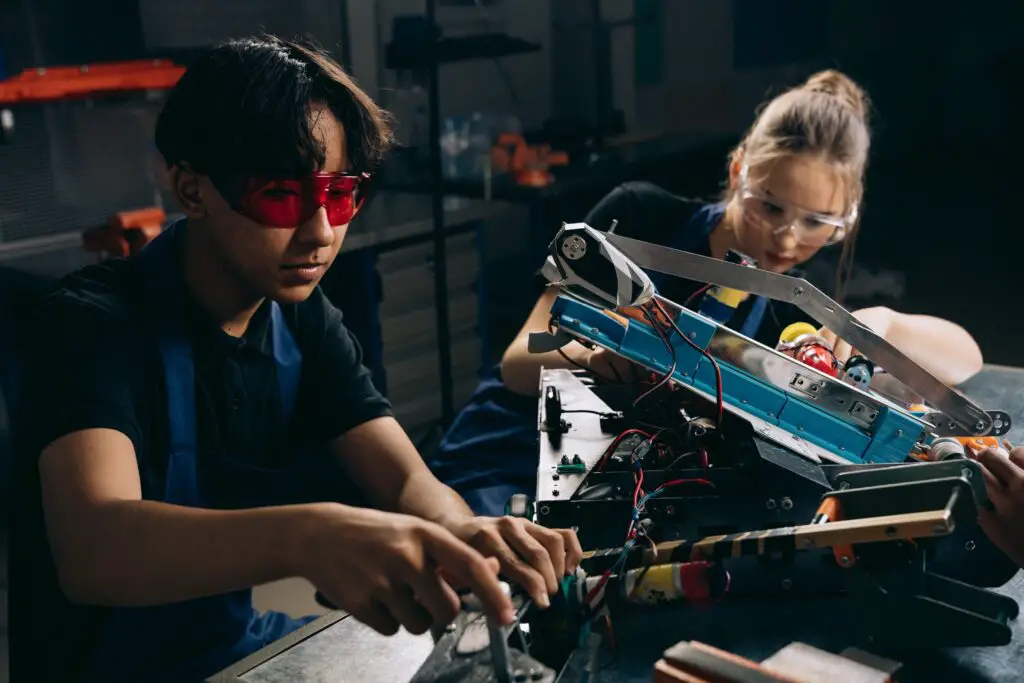Unraveling the Essence of Manufacturing Engineering
In the intricate tapestry of industrial prowess, manufacturing engineering stands as the silent orchestrator, weaving together innovation, precision, and efficiency. It’s the backbone of production, a symphony of technical acumen and creative problem-solving. From the inception of an idea to the final product’s fruition, manufacturing engineering encapsulates the artistry of turning concepts into tangible reality. Let’s embark on a journey to unravel the nuances, essence, and pathways into this dynamic field.

Understanding Manufacturing Engineering:
The Core Essence
Harmonizing Design and Production Manufacturing engineering isn’t merely about churning machines or perfecting assembly lines; it’s a marriage of design finesse and practical execution. Engineers in this realm amalgamate creativity with technical prowess, refining designs to ensure they are not just conceptually brilliant but manufacturably feasible. They scrutinize blueprints, identify potential pitfalls, and engineer solutions that harmonize functionality with production efficiency. It’s a ballet of intellect and application, where the dance between aesthetics and manufacturability choreographs the path to product realization.
Innovative Technological Integration The heartbeat of manufacturing engineering pulses with innovation. Technological advancements constantly redefine the landscape, presenting engineers with an ever-expanding toolbox. From AI-driven automation to additive manufacturing and IoT integration, staying ahead requires an insatiable thirst for learning and adaptation. Engineers delve into the depths of emerging technologies, harnessing their potential to optimize processes, reduce costs, and elevate product quality. Embracing these innovations isn’t just an option; it’s the lifeblood that propels the industry forward.
Navigating the Path:
How to Step into Manufacturing Engineering?
Educational Pathways and Qualifications The gateway to this domain often begins with a foundation in engineering. Pursuing a bachelor’s degree in mechanical, industrial, or manufacturing engineering lays the groundwork, providing a comprehensive understanding of core principles. Some opt for specialized programs focusing explicitly on manufacturing processes or systems engineering. Beyond formal education, certifications such as Six Sigma or lean manufacturing can add substantial value, showcasing a dedication to mastering industry-relevant methodologies.
Gaining Hands-On Experience Theory without practice is like a canvas without a brush. Internships, co-op programs, or entry-level positions grant invaluable real-world exposure. These opportunities allow budding engineers to witness the intricacies firsthand, learning from seasoned professionals while honing their problem-solving skills in a practical setting. Embracing these experiences not only fosters technical expertise but also nurtures adaptability and a deep understanding of the industry’s pulse.
Embracing the Role:
A Kaleidoscope of Responsibilities
Process Optimization and Continuous Improvement At the core of a manufacturing engineer’s role lies the pursuit of perfection. They meticulously dissect processes, scrutinize workflows, and identify bottlenecks with the precision of a surgeon. Through methodologies like Six Sigma or Kaizen, engineers streamline operations, trim unnecessary fat, and infuse efficiency into every facet of production. The mantra is simple: continuous improvement is the compass guiding the ship toward excellence.
Collaborative Multidisciplinary Approach Manufacturing engineering isn’t a solo endeavor; it’s a symphony where each instrument plays a vital role. Engineers collaborate across departments, synergizing with designers, supply chain managers, and production teams. Effective communication becomes the linchpin, weaving a seamless tapestry of ideas, insights, and solutions. The ability to navigate these multidirectional currents and extract the best from each discipline is a hallmark of a proficient manufacturing engineer.
